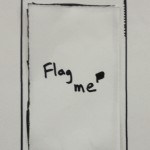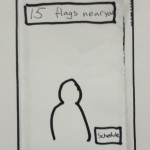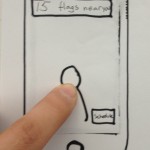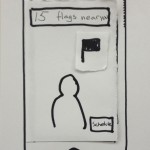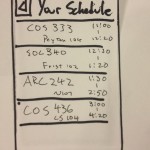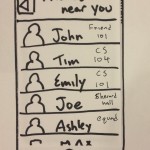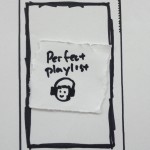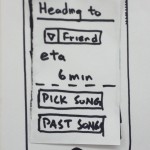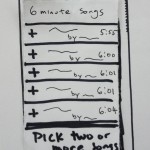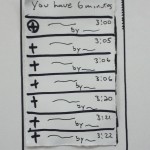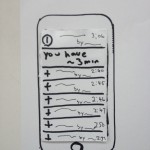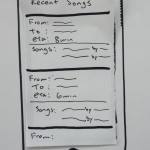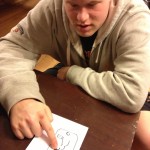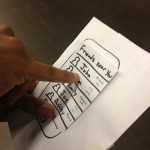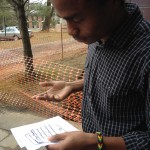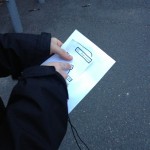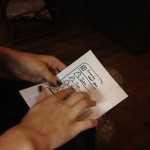I. Observations
For my first set of observations, I arrived at 10:50 for my 11:00 COS 333 lecture on a Thursday and observed early students and the professor. I also arrived early to my SOC 304 lecture, which starts at 1:30. These observations mainly focus on early students and professors and how they spend their time in the classroom/lecture hall before lecture. I asked some of them quick questions to find out how and what they do during these times. The following are my notes:
- students are socializing with friends while getting their things out for lecture. They are talking about their friends, coursework, and their day ahead
- some students are looking at readings/coursework that may not be for this (COS 333) class
- some students are looking at websites that correspond to their interests such as reddit, news sites, blogs, etc.
- some students are looking at lecture slides that the professor has posted beforehand
- some students are doing organizational work, looking at e-mails, meetings, and to do lists
- professor (in COS 333) is playing music on the speaker system and is casually greeting students that come in
- students are plugging in their phones and/or laptops before class begins
My next round of observations were conducted standing outside friend center from 2:50 – 3:00. I focused on what students (early or late) tend to do outside the classroom while they are in transit between classes. I stopped a couple students to find out where they were going, who they were with, and what they were doing. The following are my notes:
- A couple students are lingering in front of the friend center, having just gotten out of class. They are on their phones texting their friends or waiting for them
- Two students put on headphones and start walking to their next class immediately
- A group of students walk out with friends they have just run into or friends in their class
- Students start showing up for their next class, walking towards the Friend center or the CS building. They are talking to their friends as they head to class. (when I asked if they were in the same class, they answered no but both were heading in the Friend/CS building direction)
- one student is smoking a cigarette in between class ( I asked him if he was going to be late and his class next class was right next to his last class)
Reflections on Observations: Based on my observations in the minutes leading up to class, it seems that early students who spend their time in the lecture hall tend to do 3 main types of activities: review course material, perform personal organizational work, and socialize with friends/classmates. Thus, for brainstorming, I focused on designing solutions that would make these general activities easier for the early student. Based on my observations outside of the Friend Center, students who are simply in transit–neither late nor early to class–tend to socialize with their friends who are walking in the same direction or are getting out of class in nearby locations. When I asked them if they had planned earlier to meet up, most students said that they simply ran into their friend or spotted them as their last class ended. Those who weren’t socializing were listening to music on their way over. As they approached the friend center, most students who listen to music answered that they had to cut their current song short because they had reached their class location. For brainstorming ideas, I focused on the heavy socializing that occurs during transit time between classes.
II. Brainstorm List (With Yaared Al-Mehairi and Farhan Abrol)
1. A mobile app that allows students to know which one of their friends is getting out of/heading to a class that is near you.
2. An app that gives brainteasers around coursework and keeps a scoreboard on who is getting the most brainteasers in the class.
3. Professors create quick outlines of the upcoming lecture so that early students can access it from a website or a mobile app and preview the upcoming lecture.
4. An app that lets you easily schedule meal exchanges for lunch/dinner with your friends by keeping track of your current and past meal exchanges
5. A mobile app that generates a path to your next class based on what kind of beverage/snack/food you want– school would need more cafes/vendors
6. An app that emits brown noise from your phone that blocks out sounds so you can take a quick nap
7. A class time based interest/rss/blog feed generator
8. 10 minutes around the world — an app that shows you a different country every time you’re early to class
9. quick charging stations for mobile phones and laptops
10. An app that allows early students to access and skim over readings via mobile app
11. Allow students to perform quick, 3 min. gym exercises in the minutes between classes
12. Professors create a high-level overview of previous course material and students can take sporcle type quizzes
13. An electronic billboard with menus of all the dining halls and eating clubs in one place with a news line of campus and events
14. An app that puts on the song (or combination of songs) of the perfect length for your walk to class
15. Getting more benches and trashcans around campus to promote outside socialization when its nice out
III. Picking Two Ideas
#1 I found that a lot of students tend to quickly chat and socialize with their friends in their 6-8 minute interactions between class, so I wanted an app that facilitated more of these quick but meaningful social interactions.
# 14 I chose this idea since I saw many students simply listening to music on their walk between classes and a single or combination of songs can fit the length of a 10 minute walk perfectly.
IV. Prototypes
Prototype 1: FlagMe
I chose a mobile app for this idea. The idea for FlagMe is very simple–the app knows your course schedule and class location, and students can flag themselves when they get out of class so that any friends nearby can meet up with them. The prototype focuses on this simple feature. Once you get out of class, you can see if any of your friends are also getting out of class near you if they have flagged themselves. To Flag yourself, you simply tap on the user icon, and now you are visible to all your friends as having left your scheduled class. If you’re having a busy day and can’t afford to socialize between classes, you can choose not to flag yourself and carry out your day. There is no need for a user to unflag, because the app knows the 10 minute interval in which you are free–once it registers that your next class has started, it automatically unflags you.
Images of Prototype 1
- Unflagged user home screen
- Tap user icon to flag
- Flagged user home screen
- Your day’s schedule
- Your flagged friends
Prototype 2: PerfectPlaylist:
The idea for PerfectPlaylist is for students who typically listen to music on their walks to and from class. It is a mobile app that lets you pick songs in your music library that fits the length of your walk. When the user opens it, the app (which is based on Princeton buildings) lets you pick a building you are walking to and uses your GPS location to provide an ETA until your destination. The user can then pick songs from the app that would roughly match the time it takes to your destination. If the ETA is more than the length of one song or a user chooses to listen to two songs instead of one long one, he can do so.
Images of Prototype 2
- Loading Screen
- Home screen
- Pick one song (or opt to pick two for this walk)
- Pick first song
- Pick second song
- Look up your past songs on walks
V. User Testing
1. Student: My first user test was on a student who quickly stopped by his eating club in between classes. This student had very little difficulty navigating his way through the interface. He immediately flagged himself when the home screen appeared, and he was happy to know (hypothetically) that a couple of his friends were getting out of class near him. He also appreciated the day-by-day schedule that informs him of his class times and location. He said that the concept was very straight-forward and the interface was simple and easy to use. He said that he enjoyed the fact that the app demanded little attention, but offered very useful information.
2. Professor: My second test user was my Professor for an Engineering class. I had him test the prototype right after class. He navigated through the interface easily and seemed to understand the concept, though the idea of meeting up with friends to class seemed to appeal to him less than my first test user. He did, however, attempt to tap on a friend that came up on his list. Nothing happens in the prototype–it is simply a list of your friends that are flagged–but this gave me some insight on some possible improvements. The test user said that he would like to text or call his friend when he sees that he/she is nearby.
3. Student: I found a student outside Frist at 3:00 who had just gotten out of class. He was first unclear what to do and clicked on the schedule button, returned back to the homescreen and tentatively tapped on the user icon at which point I put the flag on the screen. He then proceeded to look at his nearby friends and exited out of the app. He said the concept was straightforward, and he appreciated knowing who was coming out of class near him. The only drawback was that he wasn’t sure how to flag himself, but eventually figured it out.
4. Student: My last test user was a lingering student in my sociology lecture in Robertson. When I asked her, she happened to be waiting around for a friend who had lecture in Fisher Hall (next to Robertson). She navigated the user interface very easily and quickly, seeming to understand the concept of flagging very easily. She tried tapping on her friends that showed up as flagged nearby, but, again, nothing happened. She suggested some way to notify a friend that you are waiting for him/her or the ability to directly call or text from the app.
- Test user taps the user icon, flags himself
- Test user tries to tap on a friend nearby
- Waits for something to happen
- User taps to flag himself outside Frist
- Another user taps a friend
VI. Insights from Testing
–It seemed that many users tried to click on their friends once they saw who of their friends had flags up. Unfortunately, nothing happens in the prototype when you click on your friend; however, this led me to two ideas. One solution was to add a feature such that tapping on a friend directly prompts a text message or phone call (whichever you want) and you can directly contact your friend who is getting out of class. Alternatively, I thought of adding a “buzz” feature, which would allow users to notify their friends that they are trying to meet up with them as they leave class. Tapping on a friend could “buzz” him/her, and when a user first opens the app, it can display any “buzz” notifications that were/are being sent to him.
–Most of the users said that the user interface seemed to be simple and intuitive. However, it wasn’t immediately clear to one of my test users that you had to tap on your user icon to flag yourself. He eventually figured it out but was hesitant when he tapped on the user icon. A possible improvement that may make the interface easier to understand would be a caption that reads “tap to flag” on the user icon.
–Overall, it seems that with some improvements in the user interface and additional functionality, this would be a useful app. At a school when socializing often falls second to school work, an app that helps users find friends to socialize with even between classes is worthwhile. I’m happy with the feedback I got from my users and gained some valuable insights after testing.

